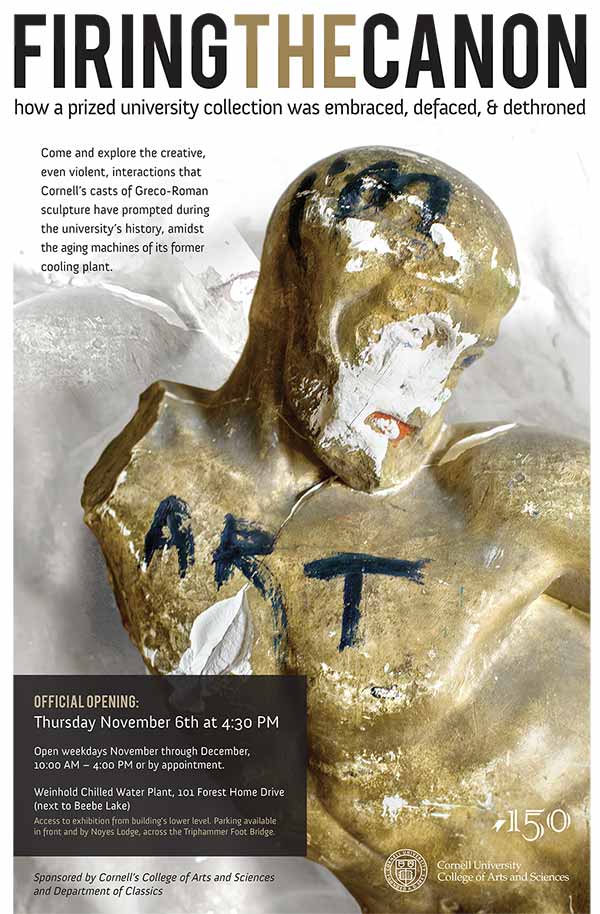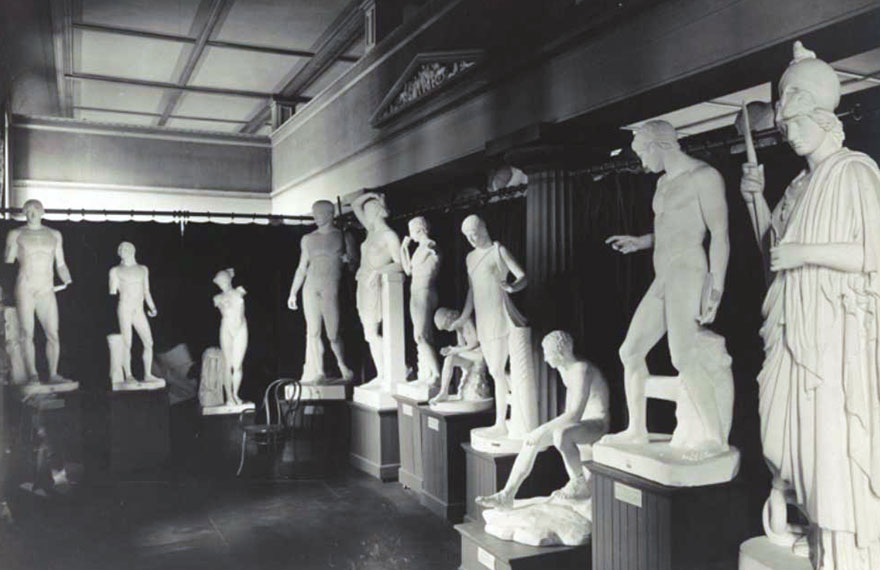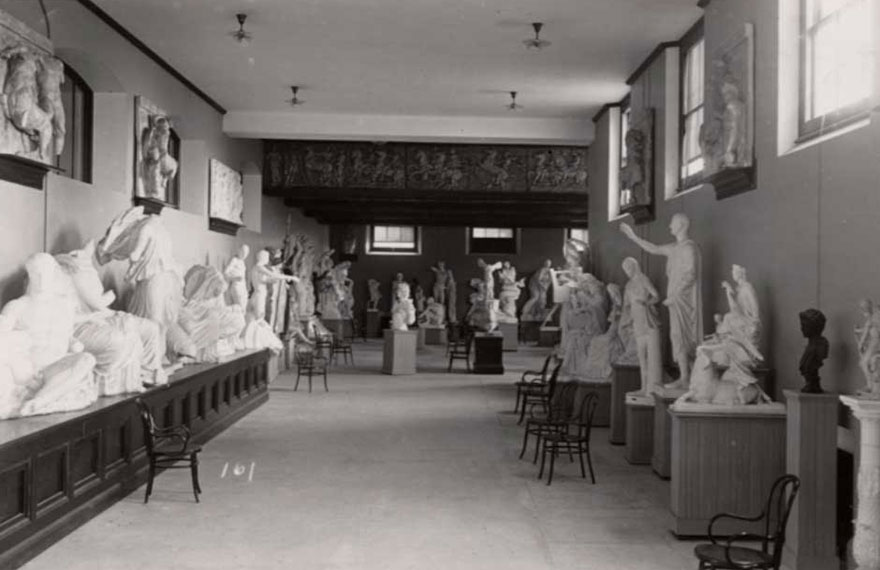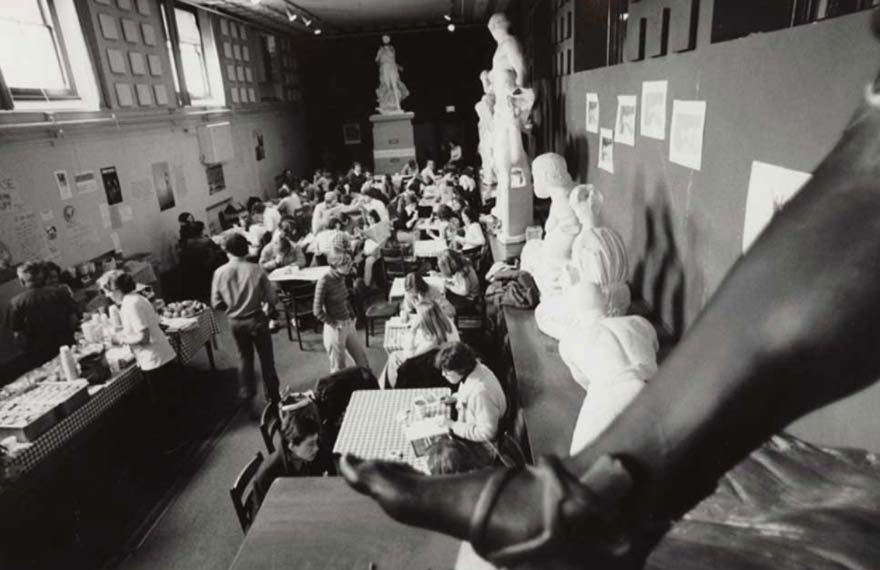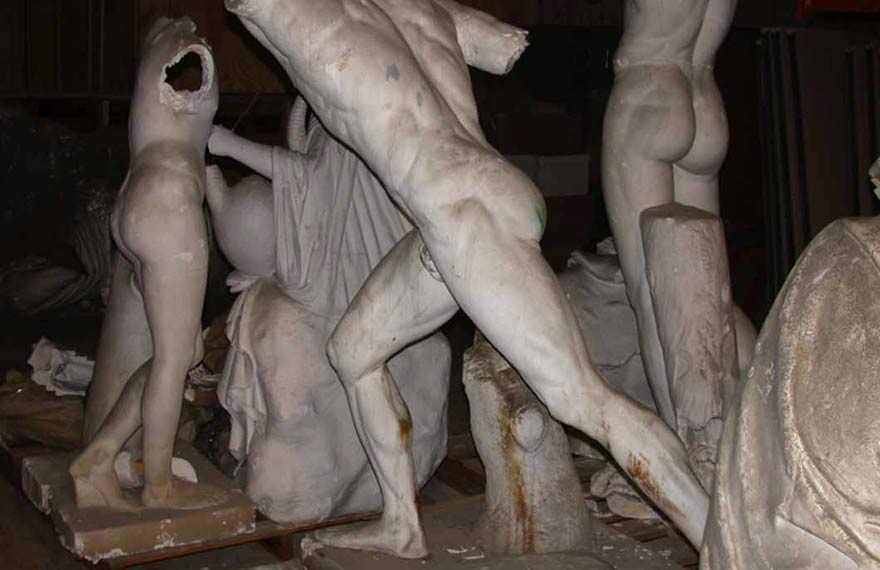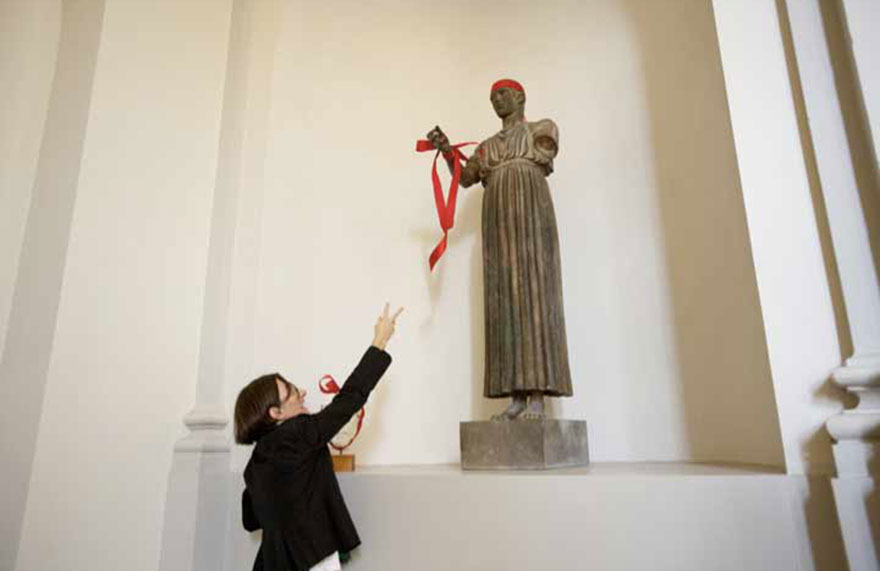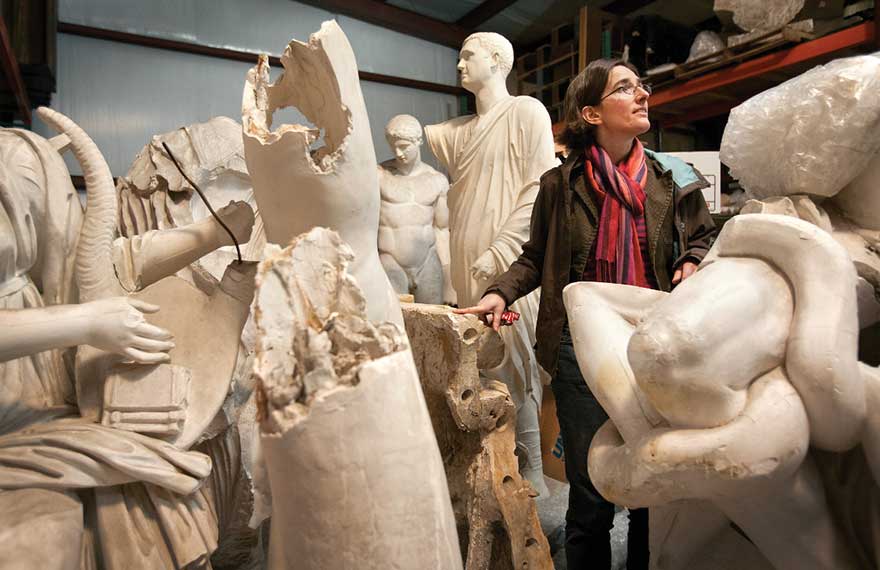
Prized Collection Embraced, Defaced, and Dethroned
In the 1890s, 19th century casts of ancient Greek, Roman, Near Eastern, Egyptian, medieval and Renaissance pieces were collected and used as a way to facilitate education about these historic relics. Since then, many became lost, abandoned, reviled and sometimes even violently destroyed.

Casts with a History
Strolling through Goldwin Smith Hall, you can't help but notice the plaster-cast statues and reliefs of ancient sculptures encased along the walls. However, the artwork on display is but a fraction of a 500-piece collection which was once one of the largest in North America. Where are the other pieces? They've spent far too long in disarray and disrepair in a cramped warehouse near the Ithaca airport, relatively unknown and neglected.
Associate Professor of History of Art and Classics Annetta Alexandridis and Associate Professor of Classics and History of Art Verity Platt are working to restore the cast collection and make it once again available to the Cornell community.
A Moment in the Life of an Object
Curators Annetta Alexandridis and Verity Platt, associate professors in the history of art and classics, say they are excited about the juxtaposition of the casts amid the aging mechanics of the Chilled Water Plant. "Both the objects and setting represent earlier stages in Cornell's history, raising important questions about the preservation and adaptation of the past in the present," Alexandridis says.
"Firing the Canon" focuses on the rejection and destruction of the casts, setting their historical treatment at Cornell in the context of broader artistic and intellectual movements. "We show the casts as damaged and vandalized with graffiti," Platt says. "This draws attention to an important – and visually arresting – moment in the life of the object, which can itself be seen as a demonstration of creativity and a source of inspiration."
Valued, De-valued and Valued Once Again
The collection of 19th-century casts of Grecian, Roman, Egyptian and medieval pieces was compiled in the 1890s with funds from trustee Henry Sage. Originally displayed in McGraw Hall, the pieces were moved into Goldwin Smith Hall in 1906. But by the middle of the 20th century, Alexandridis said, the casts were seen as secondhand copies of the originals, and most of them were packed away.
But now, Cornell's copies are often in better shape than the originals, due to weathering, loss and pollution's effects, making them valuable once again. The ultimate goal of Alexandridis and Platt is to restore as many of the casts as possible, and examples of their efforts will be displayed in "Firing the Canon." Graduate and undergraduate students have been helping with the restoration; the practical, public-service component of Alexandridis' Greek & Roman Art & Archaeology course this semester included work on the casts for the exhibit, guided by restorer Kasia Maroney.
Firing the Canon: The Cornell Casts and Their Discontents
How a prized university collection was embraced, defaced, and dethroned.
Come and explore the creative, even violent, interactions that Cornell's casts of Greco-Roman sculpture have prompted during the university's history, amidst the aging machines of its former cooling plant.
Open weekdays November and December, 10 am to 4 pm or by appointment
Weinhold Chilled Water Plant, 101 Forest Home Drive, next to Beebe Lake.
Access to exhibition from building's lower level. Parking available in front & by Noyes Lodge, across the Triphammer Foot Bridge
Sponsored by Cornell's College of Arts and Sciences and Department of Classics.
